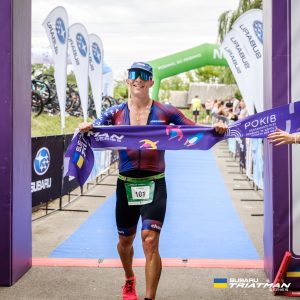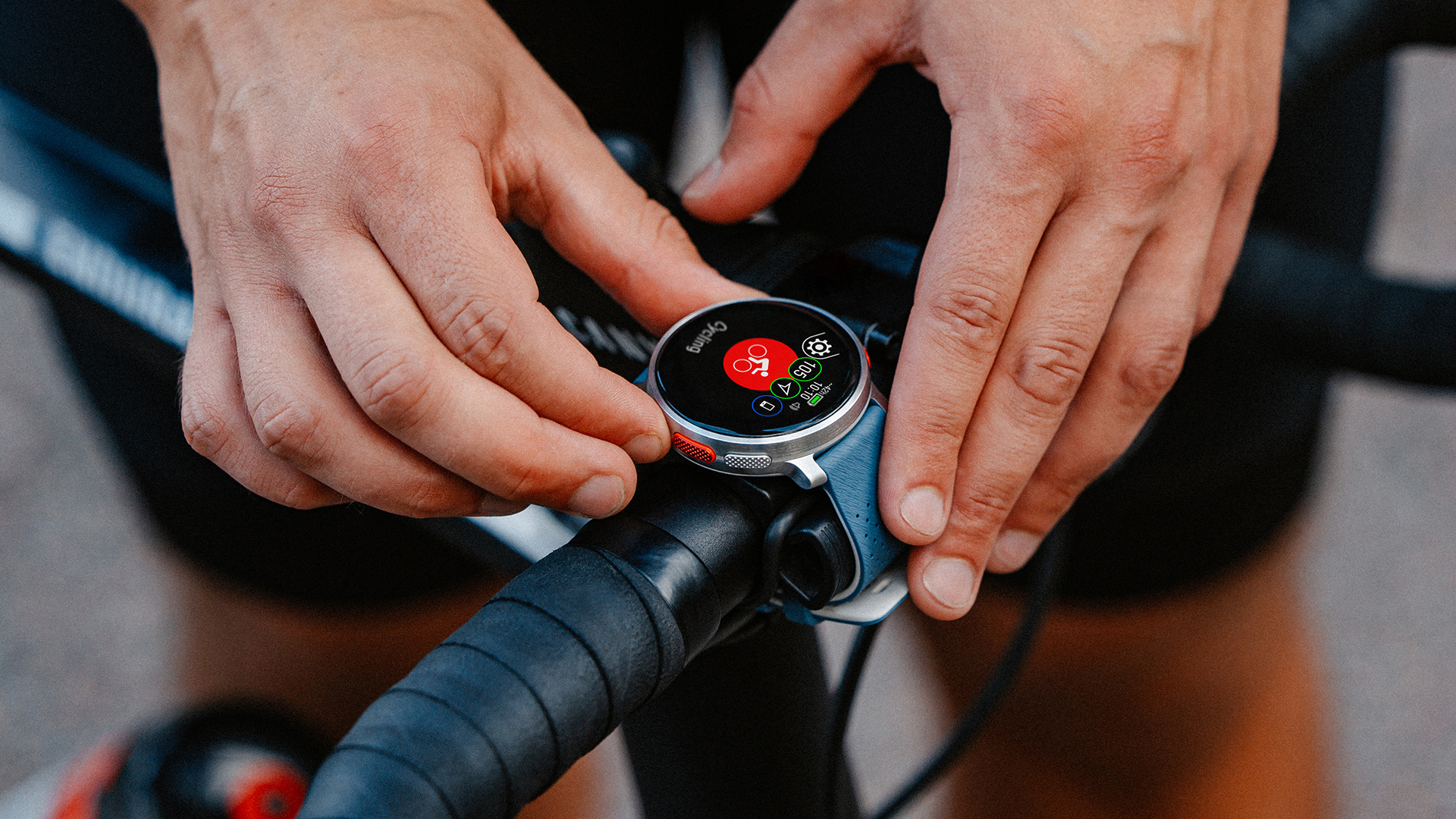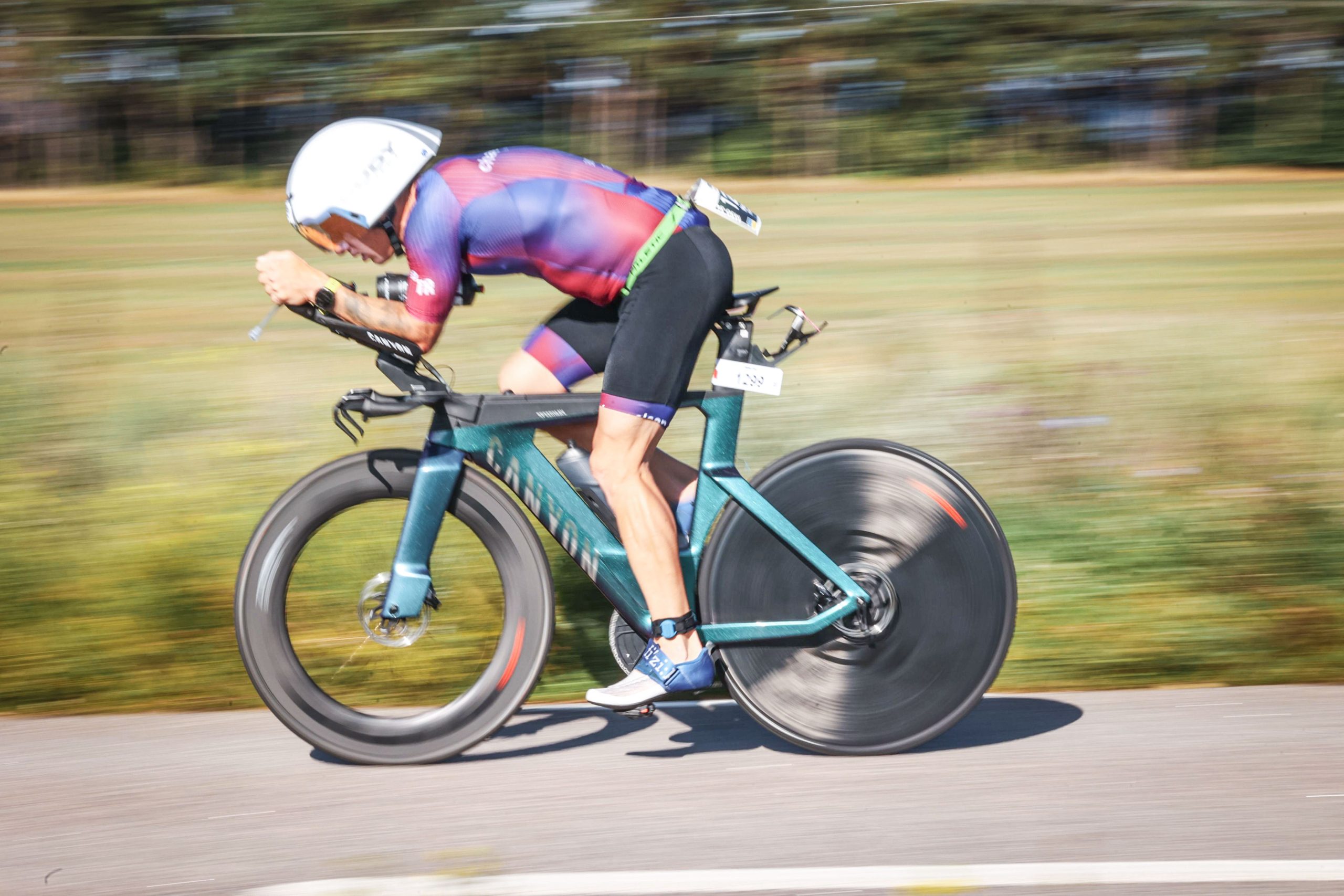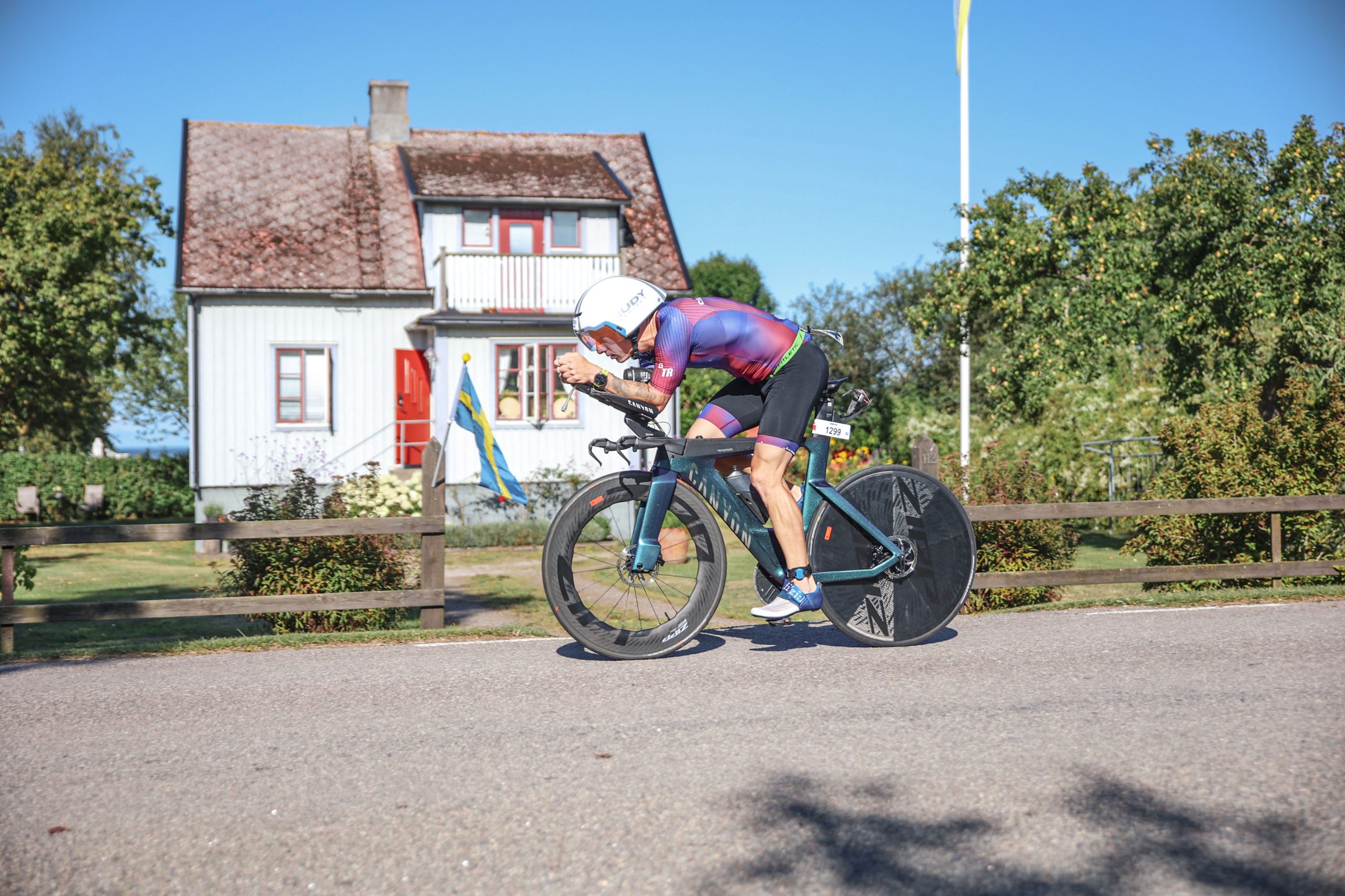The first few miles feel smooth. Your legs are light, your breathing steady. Then the sun shifts higher, the brightness hits, and suddenly you’re squinting against the glare. Your eyes start to water, your forehead tightens, and that effortless rhythm disappears. It’s a small distraction, but on a long run, like a marathon event, or during an Ironman distance triathlon, it can throw you off more than you’d think.
That’s where the right sunglasses make all the difference. They shield you from the harsh light, stay in place when the sweat kicks in, and let you forget about them completely.
After exploring dozens of reviews, I’ve narrowed down the ones that truly work for runners: durable, lightweight, and built to move with you.
Here, I will share some of the best sunglasses for running, along with the main characteristics to look for when choosing your new pair. Ready to dive in? Then, let’s go.
Key Features of Running Sunglasses
A great pair of running sunglasses helps you see clearly, stay comfortable, and perform at your best, whether it’s a nice and easy recovery run or an intense hill running workout. Here’s why these features make all the difference:
1. Polarized lens technology: Bye-bye glare, hello clarity
Ever struggled with blinding reflections off wet pavement or glaring sunlight on a bright day?
Polarized lenses cut through harsh glare. They reduce eye strain and sharpen contrast so you can spot uneven terrain, puddles, or obstacles with ease. These sunglasses are a game-changer for road runners and trail enthusiasts alike.
2. Interchangeable lenses – Ready for any light
Morning runners know how quickly conditions shift, dim at sunrise, blazing by mid-run.
Sunglasses with swappable lenses let you switch from low-light tints to darker shades in seconds. No more squinting or sacrificing visibility as the day changes.
3. Photochromic lenses: The smart, self-adjusting solution
If you hate fiddling with lens swaps, photochromic (transition) lenses do the work for you.
They automatically darken in bright sunlight and lighten in shade, providing consistent protection and comfort without any extra effort. Perfect for runners who face mixed lighting on long routes.
4. Tinted lenses: More than just shade
Not all lens tints are created equal.
Amber or rose lenses boost contrast. These are ideal for overcast days or wooded trails, while darker gray or green tints excel in bright light. The right tint can reduce fatigue and help you see details more clearly.
5. Prescription lenses – Clear vision for every stride
If you wear glasses, blurry vision shouldn’t slow you down. Many performance sunglasses now offer prescription-compatible options, allowing you to enjoy the same crisp optics and secure fit as standard running shades. No more awkward clip-ons or compromising on style.
In the end, the best running sunglasses combine these features with a lightweight, no-slip fit, because when your gear works seamlessly, you can focus on other things, such as increasing mileage running, working with your breath, or improving your speed, rather than your gear.
Importance of UV Protection
When you head out for a run, especially during hot weather, such as when training for a triathlon during summer vacation, you probably (and hopefully) use sunscreen to protect your skin. But your eyes? They’re just as vulnerable to the sun’s rays. Harmful ultraviolet (UV) light can cause lasting damage over time.
Researchers have shown that UV rays break down eye proteins and can harm the retina, which raises the risk of cataracts, macular degeneration, and even eye cancers.
And the problem is caused not just by direct sunlight. Pavement, water, and even snow reflect harmful UV rays back into your eyes, doubling the exposure. That’s why runners are especially at risk: long miles outdoors mean long hours under UV light.
A 2018 study on sun exposure to the eyes modeled the amount of UV that actually reaches your eyes with different types of sunglasses. The results were surprising: medium frames let a lot of UV sneak in from the sides, while wrap around sunglasses or goggles offered far better protection.
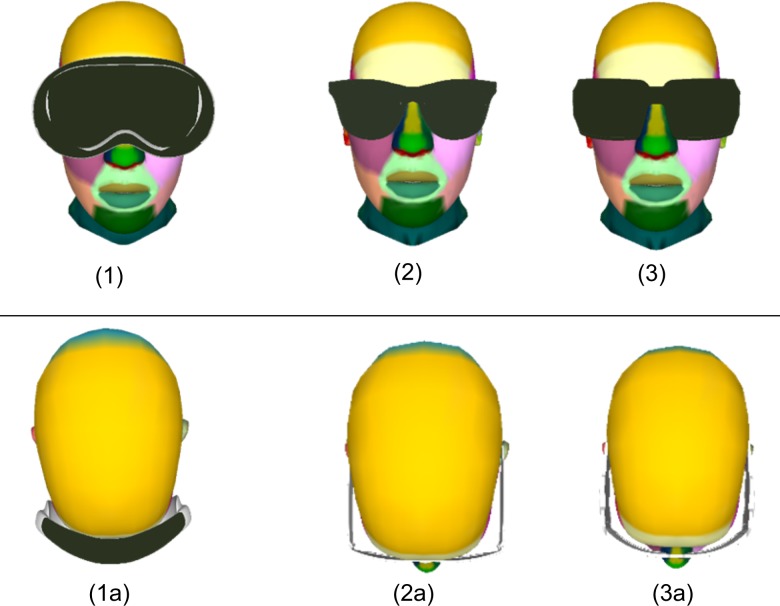
And here’s a common myth worth busting: darker lenses don’t automatically mean more protection. What really matters is whether your sunglasses block 100% of UVA and UVB rays. So, you want to look for labels that say “UV400” or “100% UV protection.” That’s the only guarantee.
When it comes to lens material, polycarbonate is a runner’s best friend. It naturally blocks UV light, even if the lenses are clear. Plus, it’s lightweight and shatter-resistant. These are two things that matter when you’re logging long miles and don’t want to worry about gear. Optometrists confirm this, and even runners on Reddit forums point out that polycarbonate lens offer built-in UV protection without needing tints or coatings.
Finally, think about the shape of your sunglasses. Wraparound frames don’t just look sporty, they’re also practical. They stop stray UV rays that come in from the sides, which standard frames often miss. That extra coverage means less eye strain, less watering, and more focus on your stride.
Benefits of Wearing Sunglasses While Running
Here’s why slipping on shades should be as essential as lacing up your shoes:
Sharper vision, less strain
Ever finished a sunny run with tired, achy eyes? Quality running sunglasses filter harsh light, reducing squinting and eye fatigue. They basically help you spot obstacles more easily, read your watch, or enjoy the scenery without strain.
Built-in eye armor
From gusty winds to kicked-up dirt and bugs, sunglasses act like a shield for your eyes. No more blinking away debris mid-stride, just uninterrupted focus on your pace and path.
Glare? Gone.
Polarized lenses are a secret weapon against blinding reflections from wet pavement, snowy trails, or even morning dew. They cut the glare so you can see true colors and textures clearly. This is key to avoiding slips or missteps.
Adapts like your eyes (but better)
Photochromic lenses are the chameleons of the sunglass world. They seamlessly adjust from low light conditions to bright light, so you’re never caught off guard by shadows or sudden sunbursts on mixed-terrain runs or when trail running.
Custom clarity for any run
Interchangeable lenses let you tailor your eyewear to the conditions. Swap in high-contrast amber lenses for foggy dawn runs or dark tints for midday desert treks, because one lens doesn’t fit all scenarios.
15 Best Running Sunglasses in 2025
These are some of the top-rated running glasses, according to user reviews on Reddit, Running Reviews.com, Tom’s Guide, and other trustworthy resources. The list covers both high-end and budget running sunglasses, so you can choose one that matches all your requirements.
1. Oakley RADAR EV PATH
A top pick for larger-faced runners. These offer a tall Prizm lens that widens your field of vision, ideal when you’re scanning the trail or racing fast.
Oakley’s high-definition optics (HDO) sharpen contrast and detail, while Unobtainium nose and ear pads stick better as you sweat. The O-Matter frame is lightweight yet tough.
- Price: $193
- Weight: 28 grams
- Key features: High-definition optics with Prizm lenses, lightweight O-Matter frame, Unobtainium nose and temple grips for a secure fit.
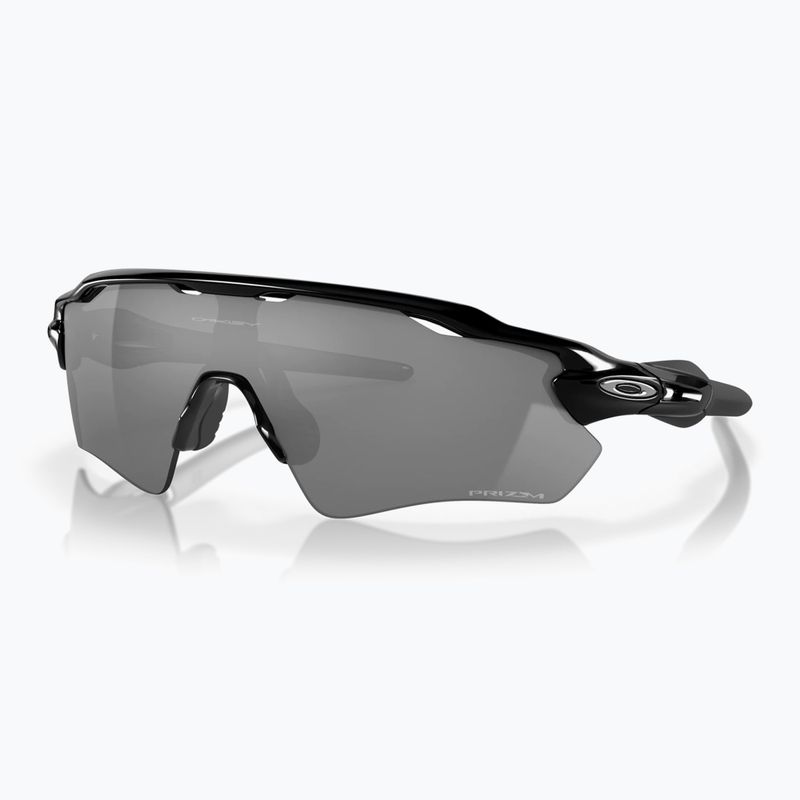
2. Goodr OG Sunglasses
A fan-favorite for a reason. These low-cost shades stay in place thanks to a grippy, matte-coated frame. They’re polarized, UV400-rated, and perfect for casual runs or daily wear. These are pretty affordable sunglasses that offer tons of color options and solid performance.
Redditors say:
“They don’t move at all.”
But some caution about possible lens scratching over time.
- Price: $25-$35
- Weight: 22 grams
- Key features: Polarized lenses with UV400 protection, no-slip grip coating, lightweight and fun designs.
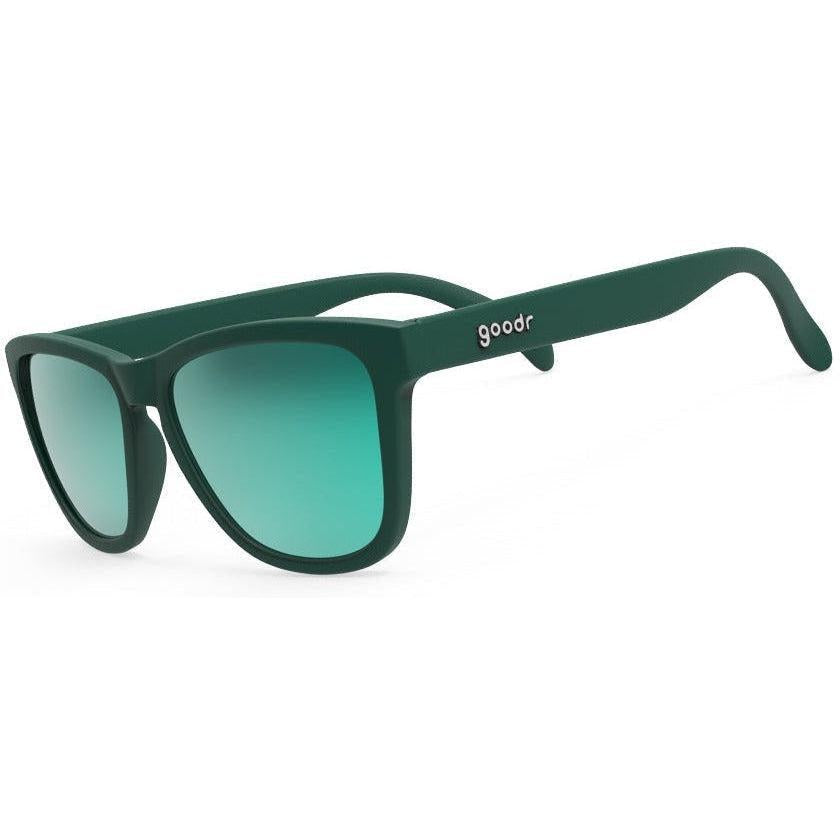
3. Oakley Flak 2.0 XL
These offer wraparound protection, PRIZM-enhanced contrast, and a semi-rimless design that won’t hit your cheeks when you look down. The O-Matter frame is durable and lightweight, and the Unobtainium grips stay tacky even when you sweat.
Really comfortable on my face. Top quality build and lenses work very well, Even when it goes a bit dark you can still see. With the vision and comfort you can forget they’re on.
- Price: $214-$267
- Weight: 22 grams
- Key features: GEKO™ pads for a secure fit, lightweight TR-90 frame, interchangeable lenses.

4. Roka Rory 2.0
Weighing just 17 grams, these are incredibly light and barely noticeable mid-run. The FloatFit TR-90 nylon frame is comfortable and durable.
With GEKO pads and spring-loaded hinges, they don’t slip and stay snug through fast or long miles. Top-tier optics too: polarized, anti-fog, anti-scratch, and hydrophobic. In short, these are high-quality and durable sunglasses perfect for running, triathlon, cycling, and everyday lifestyle.
- Price: $215–$245
- Weight: 19 grams
- Key features: ChromaPop™ lenses for enhanced clarity, interchangeable lenses, full coverage design.

5. Smith Motive
Rated highly by Tom’s Guide, these have ChromaPop lenses that enhance clarity and color contrast. They offer a secure fit and decent ventilation. These glasses are great for trail routes where you need visibility in changing light.
- Price: $175-$185
- Weight: 27 grams
- Key features: ChromaPop™ lenses for enhanced clarity, interchangeable lenses, full coverage design.

6. Nike Victory Elite
These feature a wide, wraparound lens for uninterrupted vision. Designed with feedback from female runners, they stay snug and actionable even through pacing or trail transitions.
- Price: $180–$200
- Weight: 30 grams
- Key features: Adjustable nose bridge and temple arms, wrap-around lens for full coverage.

7. Oakley BiSphaera
A standout for runners needing prescription lenses. Lightweight and high-performance, they bring pro-level design and optics to everyone.
- Price: $220–$250
- Weight: 30 grams
- Key features: Dual-lens performance sunglass, lightweight O-Matter frame, Prizm™ lens technology.

8. ROKA Phantom Titanium
Ultra-light and sleek. While it’s a cycling favorite, runners looking for near-weightless gear will appreciate its minimalist feel without compromising on clarity or style.
- Price: $315
- Weight: 20 grams
- Key features: Titanium frame, GEKO™ pads for optimal fit, hydrophilic properties for enhanced grip.

9. Tifosi Vero (compact)
Great for smaller heads. These offer interchangeable lenses, wraparound coverage, and solid performance, all at a price that won’t make your wallet sweat.
- Price: $50–$60
- Weight: 26 grams
- Key features: Durable construction, lightweight design, interchangeable lenses.

10. Smith Deckboss
Built for larger faces, these wrap very well and feel secure. They provide solid UV protection and are especially smart for runners covering miles under bright sun.
- Price: $169
- Weight: 30 grams
- Key features: Full coverage design, ChromaPop™ lenses, adjustable nose pads.

11. Nike Flyfree Shields
Super comfortable thanks to adjustable nose pads and flexible silicone arms. Lightweight and easily molded to your head, they’re ideal for long pace runs where comfort can’t be sacrificed.
- Price: $160–$180
- Weight: 25 grams
- Key features: Adjustable nose pads, flexible silicone arms, lightweight design.
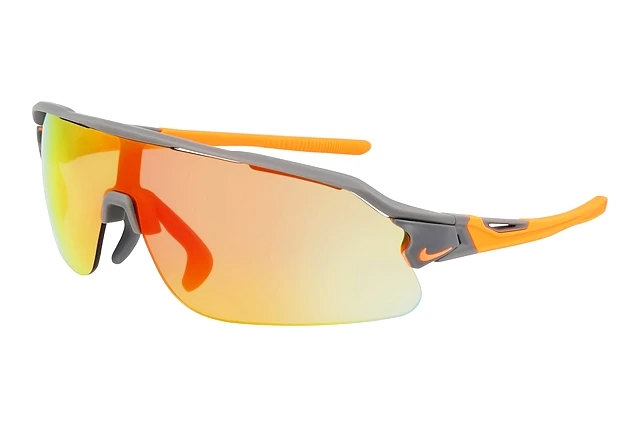
12. Goodr Mach G Aviators
If you prefer the aviator look but need running-ready performance, these keep the grippy, no-bounce frame and polarized lenses while looking sleek and stylish.
- Price: $25–$30
- Weight: 20 grams
- Key features: Polarized lenses, no-slip grip, aviator style.
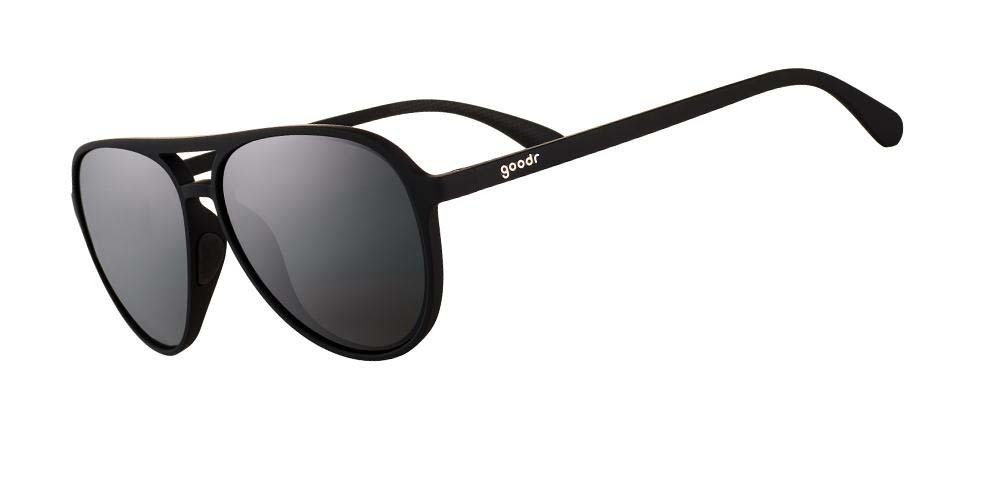
13. Oakley Radarlock
A bestselling classic. Lightweight, secure, and customizable with different lenses and colors. Trusted by those who want style and function in one.
- Price: $200–$230
- Weight: 30 grams
- Key features: Switchlock™ lens technology, lightweight frame, interchangeable lenses.

14. Tifosi Moab
Under $100 but offering excellent coverage. Its fans like these glasses for their consistent UV protection and durability, especially on dusty trails.
- Price: $40–$50
- Weight: 25 grams
- Key features: Interchangeable lenses, lightweight design, durable frame.

15. Julbo Frequency Reactiv
The Julbo Frequency is a solid choice for runners who face changing light conditions. Its photochromic lenses automatically adjust to sunlight, keeping your vision clear without having to swap lenses.
The adjustable temples ensure a secure, comfortable fit that stays put even during longer runs. Runners looking for convenience and reliable eye protection will find this pair dependable.
- Price: $130
- Weight: 28 grams
- Key features: Photochromic lenses, adjustable temples.

Tips for Choosing the Right Sunglasses
Looking for the ideal running sunglasses is pretty much like choosing the best running shoes: what works for your training partner might leave you miserable. Let’s break down exactly what to consider for your perfect pair:
1. Match your shades to your running personality
Choose your fighter:
- Road warriors need streamlined frames that slice through wind without bouncing
- Trail crushers require full wraparound coverage to block flying debris
- Ultra runners should prioritize featherweight designs that disappear after hour 3
- Urban joggers might want photochromic lenses that adapt to constantly changing light
Pro tip: Your face shape matters more than you think. Narrow faces do best with adjustable nose bridges, while round faces need contoured temple grips to prevent the dreaded “sunglass shuffle” mid-stride.
2. Your eyes’ bodyguards: UV & polarization
UV400 protection is your retina’s insurance policy against cumulative sun damage.
Polarization does more than cut glare. It reveals true surface textures, letting you spot that barely visible patch of black ice or wet leaves. Plus, mirrored coatings reflect additional light away for extra bright conditions.
Did you know that cheap gas station sunglasses often lack proper UV filtering, causing your pupils to dilate and actually absorb MORE harmful rays. Investing in high-quality sunglasses means your eyes are protected and prepared for different conditions.
3. Be a light ninja: Smart lens options
Many brands now offer interchangeable lenses, allowing you to transform one pair into:
• Rose-tinted contrast boosters for wooded trails
• Dark smoke lenses for alpine runs
• Clear lenses for night safety
And photochromic magic means no more:
• Blinding transitions from forest shade to open fields
• Dangerous moments adjusting to tunnel exits
• Carrying multiple pairs for changing conditions
Ever been caught in a surprise rainstorm? Hydrophobic lens coatings cause water to bead right off.
4. The comfort checklist
Here are a few things to look for when choosing sunglasses:
Silicone nose pads should have just enough tack to stay put without pinching
Temple grips need to accommodate ponytails and hats without pressure points
Frame material makes all the difference:
• TR90 nylon flexes with your facial movements
• Grilamid stands up to extreme temps
• Avoid metal frames that conduct cold in winter
Conduct a sweat test: If you can do burpees without them sliding, you’ve found your match.
5. Choosing the perfect lens shape
The shape of your sunglasses’ lenses directly impacts your vision, comfort, and performance on the run. Here’s how to choose the right lens geometry for your needs:
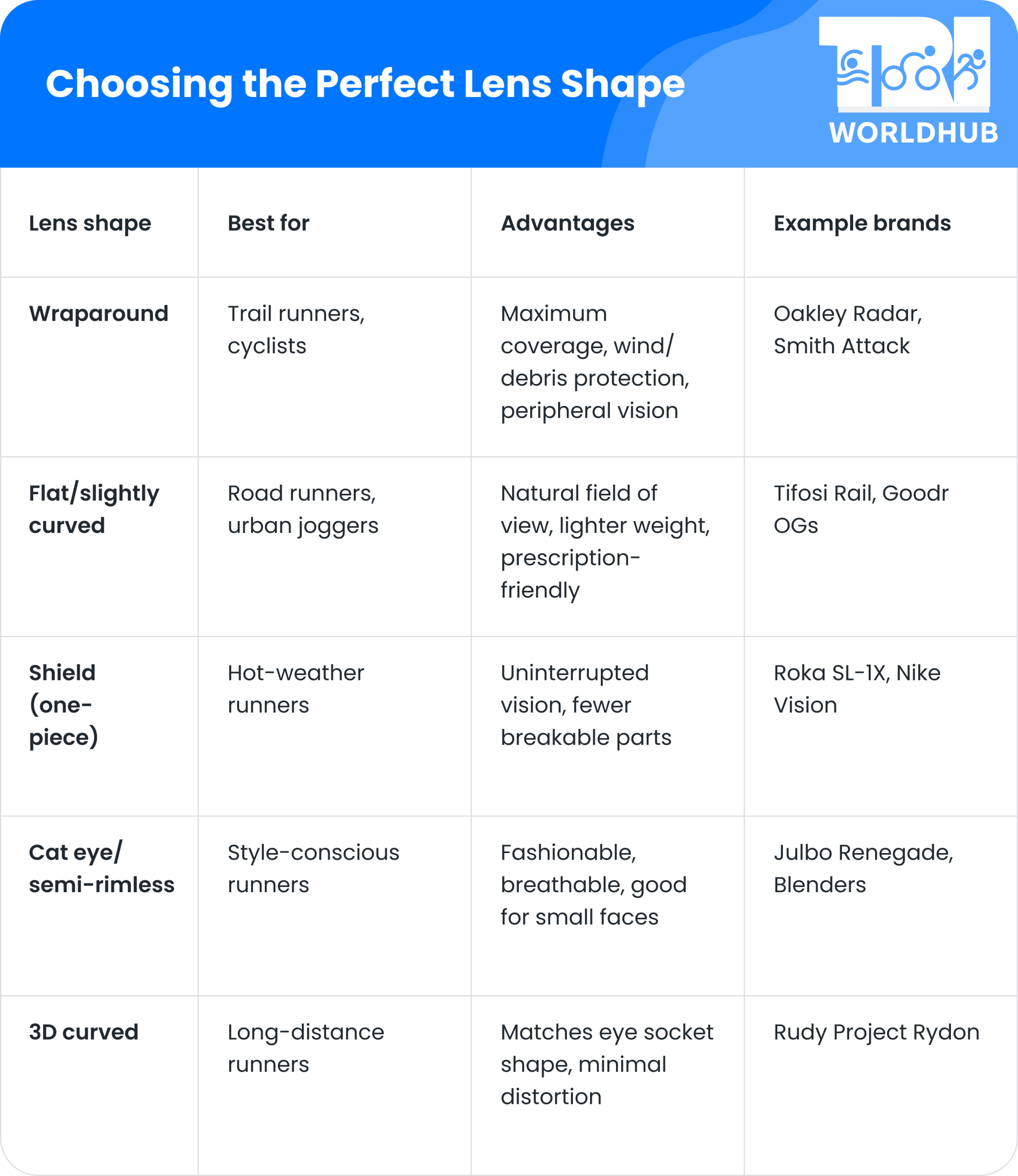
6. Style that doesn’t sacrifice function
Performance brands now offer:
• Customizable frame colors to match your kit
• Low-profile designs that don’t scream “cyclist” (there is nothing bad about these, just saying)
• Matte finishes that resist scuffs from drops
Here are some budget sweet spots:
• $20-50: Basic protection (Goodr)
• $100-150: Pro features without pro price (Tifosi)
• $200+: Premium optics for competitive edge (Oakley, Smith)
After all, the best running sunglasses make you forget you’re wearing them, until you try running without them and realize how much easier everything becomes.
Running Sunglasses and Eye Health
Running sunglasses are essential for protecting your eyes and keeping your vision sharp while you log miles. The sun’s UV rays can damage your eyes over time, increasing the risk of growths on the eye and other long-term issues, so sunglasses with 100% UV protection act as a shield and reduce eye strain.
Many running sunglasses also feature polarized lenses, which cut glare from reflective surfaces like roads, water, or snow. This makes it easier to spot obstacles, improves contrast, and helps your eyes relax instead of constantly squinting. For runners moving between sun and shade, photochromic lenses are a game-changer. They automatically darken or lighten depending on the light. This feature helps to keep your vision comfortable and clear throughout your run.
If you need vision correction, prescription running sunglasses let you combine protection and clarity in one pair. They’re tailored to your eyes, stay secure during movement, and remove the hassle of juggling separate glasses or contacts.
In short, the right running sunglasses do more than make you look good. They protect your eyes from UV damage, reduce glare, adapt to changing light, and keep your vision clear, all while letting you focus on your run.
Conclusion
The right running sunglasses offer more than just making you look good. They protect your eyes from UV damage, reduce glare, adapt to changing light, and keep your vision clear. All this while letting you focus on your run.
I’ve shared what to look for and highlighted the best options out there, so you can choose your new favorite running sunglasses that fit your eyes, your pace, and your style.
With the right pair, you’ll protect your vision, stay comfortable on every run, and focus on what really matters: enjoying the miles ahead.
